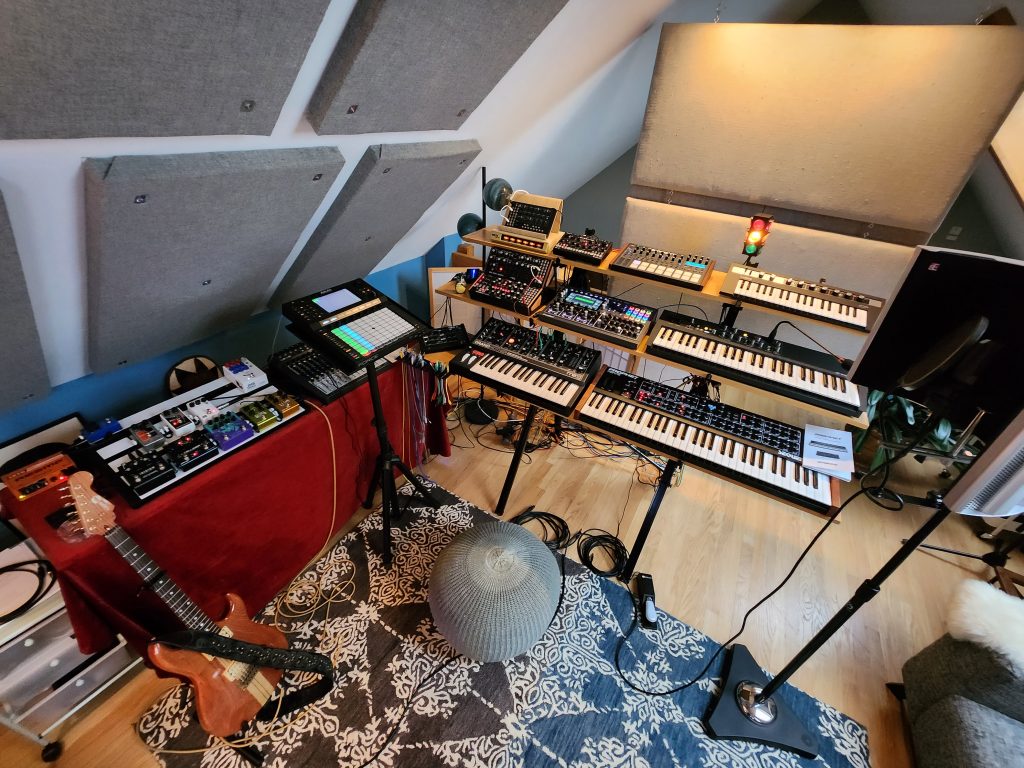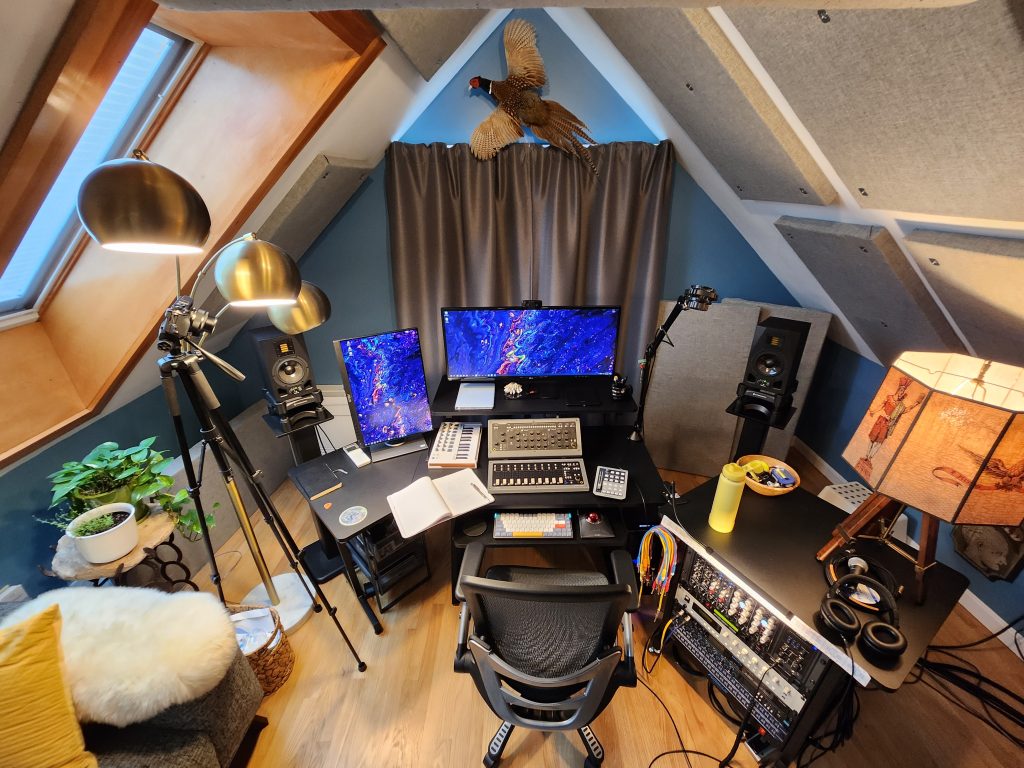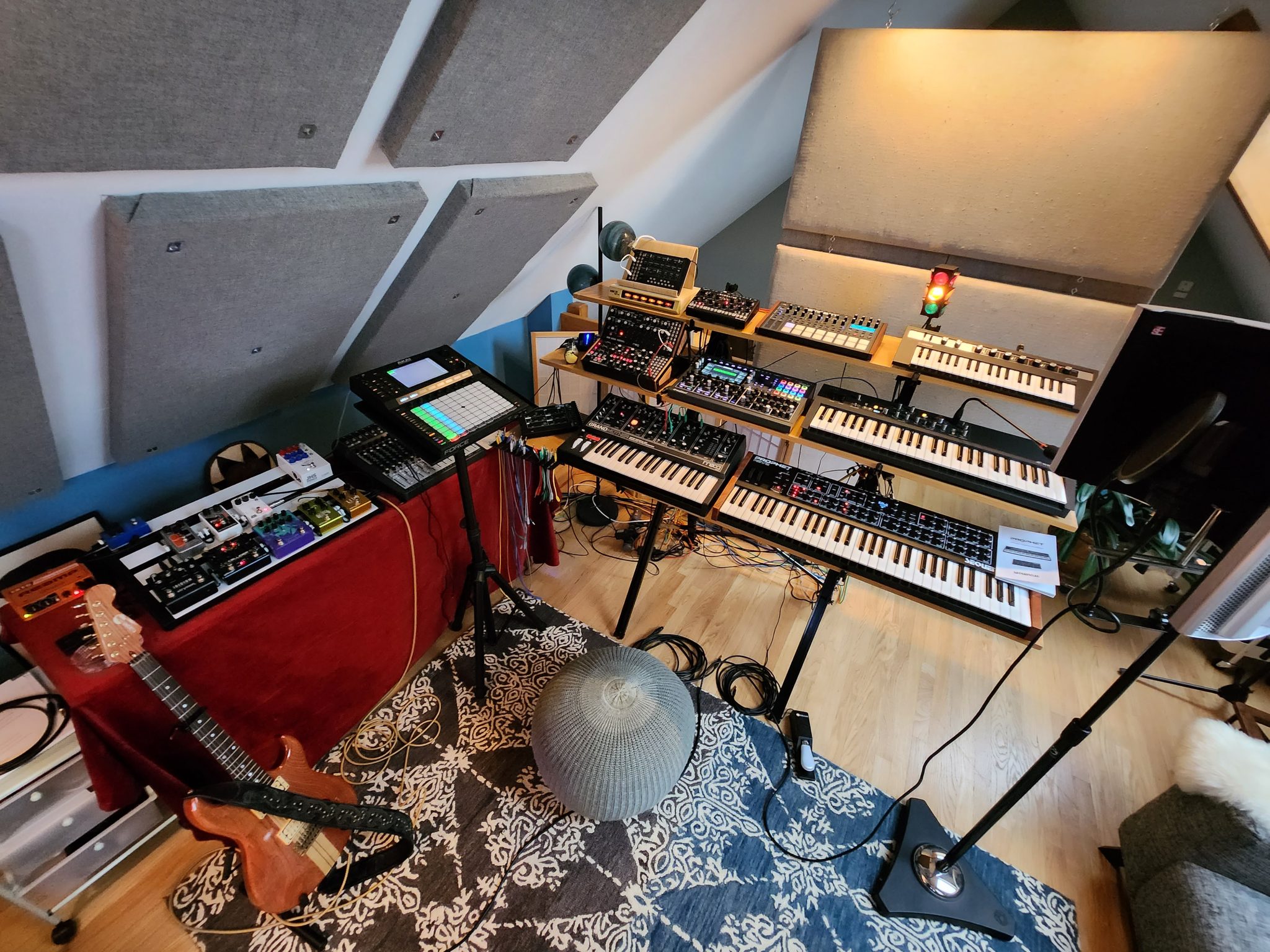I’ve been trying to make my recording process and live performance much more similar — of course, with more gear available during recording! The reason for this? I’m trying to cut down the INTERMINABLY long process of taking a song from creation to release.
In my past solo work, I’ve spent months per song (though not all at once, and working on lots of songs at once). This means it takes a year or two for an EP-length project. While that may work for some, I have a LOT of songs, and I’d really prefer to capture them and move on, rather than fiddling for months. (There’s a broader conversation here, but I’m not going to have it with myself right now.)
Although I haven’t released music using this process yet (soon!!!), here’s my current favorite way or working.
Capturing the Performance

I use Ableton Live Bitwig w/ the Akai Force as a controller to capture performances in the studio. (Edit: the Force is supported in Bitwig now via the awesome DrivenbyMoss drivers! Woohoo!!) I’m using a quick-to-audio approach for my synths, so even though I might record MIDI first, I’m going to have audio before the session is over (w/ knob twiddling, of course!).
Ableton Bitwig works for me for this purpose because I can keep the music humming the entire time I’m working. Creating different sections of a song and switching between them is wicked easy in session view, and it accommodates clips of any length, which I absolutely love! So one clip might be 2 minutes long/64 measures/whatever, and another might be 2 measures long, and I don’t have to worry about it.
Arranging the Performance

Next, I make a basic arrangement/form and record it to the Ableton Bitwig arrangement view. Being a DAW user since before Ableton Bitwig, I have a very, very hard time working w/ it like a normal DAW, so I get outta there as quickly as possible.
Refining the Performance
Here are the finishing steps:
- Export individual tracks as audio; import into #StudioOne (my current preferred DAW).
- Flesh out and/or refine the arrangement: add flourishes, transitions, etc.
- Record and process final vocals, when applicable.
- Mixing/mastering (sometimes me, sometimes someone else; when me, I do this in Studio One as well)
And that’s it! Ideally, this would mean that each song gets about three sessions, which might be anywhere from 3-8 hours long. This is WAY less time than I’ve spent per song in the past, which means I get to move on to my favorite thing more quickly: starting something new. 🙂
